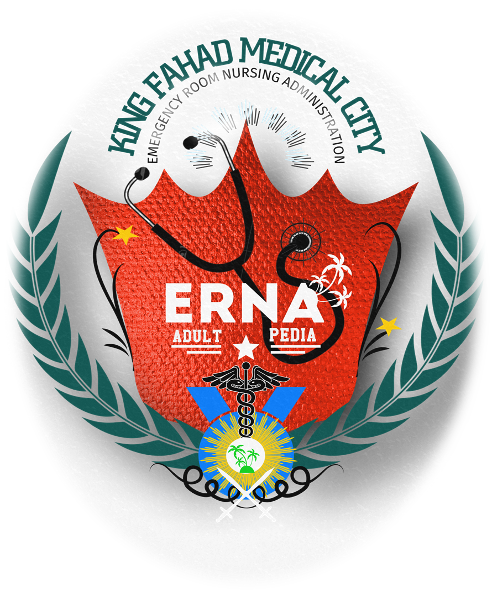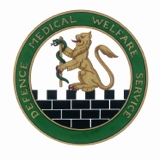Title Page
-
Site conducted
-
Conducted on
-
Prepared by
-
Location
Medical Infection Control Audit Report
OPRP
-
Health & safety protocols including SARS-CoV-2
-
Sanitation procedures SARS-CoV-2 specific
-
Availability of disinfectants for use against SARS-CoV-2
-
Third party validation of compliance with all health & safety protocols
Healthcare Personnel Safety
-
Medical facility has an exposure control plan that is tailored to the specific requirements of the facility
-
Is the medical staff trained on preventative measures for airborne, bloodborne pathogens periodically
-
Following an exposure event, post-exposure evaluation and follow-up, including prophylaxis as appropriate, are available to the staff and are supervised by the ship's doctor.
-
Medical facility tracks staff exposure events and evaluates event data and develops/implements corrective action plans to reduce incidence of such events.
-
Medical facility follows recommendations on Immunization Practices for immunization of the medical staff, including offering Hepatitis B and influenza vaccination.
-
All medical staff receive baseline tuberculosis (TB) screening prior to joining a vessel.
-
If respirators are used, the medical facility has a respiratory protection program that details required worksite-specific procedures and elements for required respirator use, including provision of medical clearance, training, and fit testing as appropriate.<br>
-
Medical facility has well-defined policies concerning contact of medical staff with patients when medical staff have potentially transmissible conditions.
-
Medical staff educated on the importance of infection prevention measures to contain respiratory secretions to prevent the spread of respiratory pathogens.
Surveillance and Disease Reporting
-
An updated list of diseases reportable to the public health authority is readily available.
-
Medical Staff can demonstrate knowledge of and compliance with mandatory reporting requirements for notifiable diseases, and for potential outbreaks.
Hand Hygiene
-
Medical staff is required to demonstrate competency with hand hygiene.
-
Medical facility routinely audits (monitors and documents) adherence to hand hygiene.
-
Medical facility provides feedback from audits to personnel regarding their hand hygiene performance.
-
Hand hygiene policies promote preferential use of soap and water over alcohol-based hand rub.
Crew Pre-Embarkation Requirements
-
PEME
-
Covid PCR test prior to departure from home
Guest Health Screening Procedures
-
Pre-embarkation Covid-19 testing
-
undefined
- RT-PCR
- PCR
- Antigen
- Antibody
-
Self-quarantine requirements at home
-
Health questionnaire at embarkation
-
Primary terminal health screening procedures
-
Secondary Medical Screening Procedures
Crew Screening Procedures
-
Pre-embarkation screening Covid-19 testing
- Yes
- No
- N/A
-
undefined
- RT-PCR
- PCR
- Antigen
- Antibody
-
Self-quarantine requirements at home
-
Health questionnaire at embarkation
-
Primary terminal health screening procedures
-
Quarantine at embarkation/other quarantine setting
- 2 Days
- 4 Days
- 7 Days
- 10 Days
- 14 Days
Denial For Boarding Procedures & Disembarkation Scenarios
-
Symptomatic cases
-
Positive findings during screening process
-
System in place to isolate/hospitalize cases off the ship
-
Repatriation procedures for suspected or confirmed cases once released
-
Hospital & hotels networking itinerary based
Reporting System to the Public Health Authorities
-
CDC
-
Local Authorities
-
Health Canada
-
Anvisa
-
Other
Terminals & On Board Procedures For Covid-19 Risk Mitigation
-
Guest capacity reduction for cruising
-
Physical distancing procedures
-
Use of face masks (mandatory/optional)
-
Enough sanitation & disinfection stations in public areas
-
Touchless technology
-
Other technical measures or technology e.g. Pyure
Medical Facility
-
Medical facility isolation ward for suspected/confirmed Covid-19 cases
-
Nurse with ICU training & skills
-
RT-PCR testing capability
-
Antigen Point of Care testing capability
-
Medical facility has written policies and procedures for routine cleaning and disinfection of environmental surfaces, including identification of responsible personnel.
- Upon Hire, prior to being allowed to perform environmental cleaning
- Periodically e.g., quarterly, annually
- When new equipment or protocols are introduced
-
Medical staff is required to demonstrate competency with environmental cleaning procedures following each training.
- Upon Hire, prior to being allowed to perform environmental cleaning
- Periodically e.g., quarterly, annually
- When new equipment or protocols are introduced
-
Medical facility routinely audits (monitors and documents) adherence to cleaning and disinfection procedures, including using products in accordance with manufacturer’s instructions (e.g., dilution, storage, shelf-life, contact time).
- Upon Hire, prior to being allowed to perform environmental cleaning
- Periodically e.g., quarterly, annually
- When new equipment or protocols are introduced
-
Medical facility provides feedback from audits to personnel regarding their adherence to cleaning and disinfection procedures.
- Upon Hire, prior to being allowed to perform environmental cleaning
- Periodically e.g., quarterly, annually
- When new equipment or protocols are introduced
-
Medical facility has a policy/procedure for decontamination of spills of blood or other body fluids.
- Upon Hire, prior to being allowed to perform environmental cleaning
- Periodically e.g., quarterly, annually
- When new equipment or protocols are introduced
-
Providing space in waiting rooms and encouraging persons with symptoms of respiratory infections to sit at least 2 feet away from others as possible.
-
Medical facility has policies and procedures to contain respiratory secretions in persons who have signs and symptoms of a respiratory infection, beginning at point of entry to the facility and continuing through the duration of the visit.
-
Offering facemasks to coughing patients and other symptomatic persons upon entry to the facility, at a minimum, during periods of increased respiratory infection activity in the community.
PPE
-
PPE stock quantities sufficient for an outbreak
-
Medical staff who use PPE receive training on proper selection and use of PPE
- Upon hire, prior to being allowed to perform point-of-care testing
- Periodically e.g., quarterly, annually
- When new equipment or protocols are introduced
-
Medical facility provides feedback from audits to staff regarding their performance with selection and use of PPE.
Point of Care Testing
-
Medical staff who perform point-of-care testing receive training on recommended practices
- Upon hire, prior to being allowed to perform point-of-care testing
- Periodically e.g., quarterly, annually
- When new equipment or protocols are introduced
-
Medical staff is required to demonstrate competency with recommended practices for point-of-care testing following each training.
-
Medical facility routinely audits (monitors and documents) adherence to recommended practices during point-of-care testing.
-
Medical facility provides feedback from audits to staff regarding their adherence to recommended practices.
Isolation & Quarantine
-
Designated cabins for isolation (single occupancy)
-
Designated cabins for quarantine
Medical Equipment Cleaning
-
Medical facility has policies and procedures to ensure that reusable medical devices are cleaned and reprocessed appropriately prior to use on another patient.<br>
-
Medical staff is required to demonstrate competency with reprocessing procedures (i.e., correct technique is observed by trainer) following each training
-
Medical facility routinely audits (monitors and documents) adherence to reprocessing procedures.
-
Medical facility provides feedback from audits to personnel regarding their adherence to reprocessing procedures.
-
Medical facility has protocols to ensure that staff can readily identify devices that have been properly reprocessed and are ready for use (e.g., tagging system, storage in designated area).
-
Medical facility has policies and procedures outlining facility response (i.e., risk assessment and recall of device) in the event of a reprocessing error or failure.
-
Routine maintenance for reprocessing equipment (e.g., steam autoclave) is performed by biomedical personnel in accordance with manufacturer instructions; confirm maintenance records are available.
-
Date of last biomedical preventative maintenance certification done
Sterilization of Reusable Devices
-
Devices are thoroughly cleaned according to manufacturer instructions and visually inspected for residual soil prior to sterilization.
-
Cleaning is performed as soon as practical after use (e.g., at the point of use) to prevent soiled materials from becoming dried onto devices.
-
Enzymatic cleaner or detergent is used for cleaning and discarded according to manufacturer’s instructions (typically after each use)
-
After cleaning, instruments are appropriately wrapped/packaged for sterilization
-
A chemical indicator (process indicator) is placed correctly in the instrument packs in every load.
-
A biological indicator, intended specifically for the type and cycle parameters of the sterilizer, is used at least weekly for each sterilizer and with every load containing implantable items.
-
For dynamic air removal-type sterilizers (e.g., prevacuum steam sterilizer), an air removal test (Bowie-Dick test) is performed in an empty dynamic-air removal sterilizer each day the sterilizer is used to verify efficacy of air removal.
-
Sterile packs are labeled with a load number that indicates the sterilizer used, the cycle or load number, the date of sterilization, and, if applicable, the expiration date.
-
Sterilization logs are current and include results from each load.
-
After sterilization, medical devices are stored so that sterility is not compromised.
-
Sterile packages are inspected for integrity and compromised packages are reprocessed prior to use.
-
The medical facility has a process to perform initial cleaning of devices (to prevent soiled materials from becoming dried onto devices) prior to transport to the off-site reprocessing facility.
Crew Training
-
Stretcher team Covid-19 transport training & frequency
-
General crew Covid-19 training & frequency








